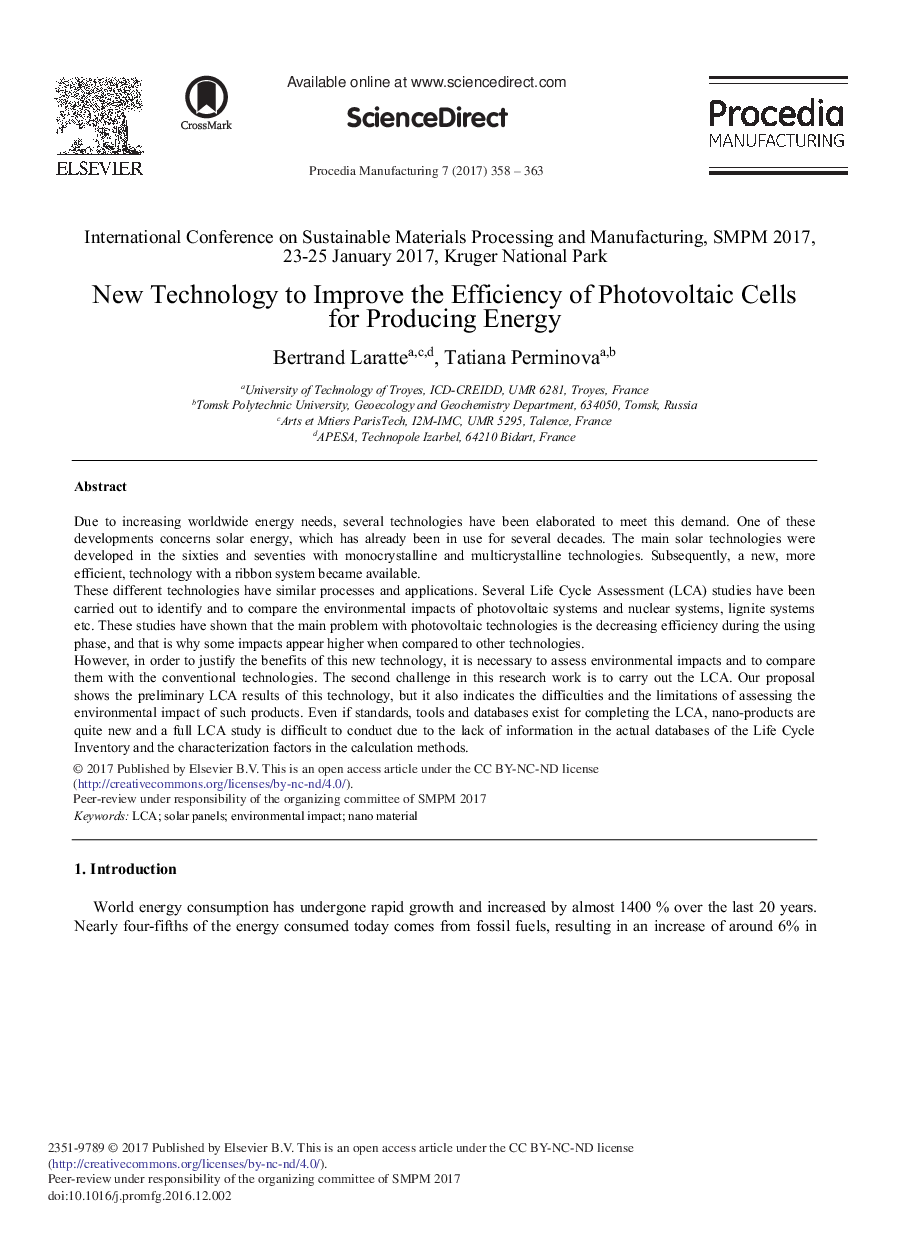| Article ID | Journal | Published Year | Pages | File Type |
|---|---|---|---|---|
| 5129182 | Procedia Manufacturing | 2017 | 6 Pages |
Due to increasing worldwide energy needs, several technologies have been elaborated to meet this demand. One of these developments concerns solar energy, which has already been in use for several decades. The main solar technologies were developed in the sixties and seventies with monocrystalline and multicrystalline technologies. Subsequently, a new, more efficient, technology with a ribbon system became available.These different technologies have similar processes and applications. Several Life Cycle Assessment (LCA) studies have been carried out to identify and to compare the environmental impacts of photovoltaic systems and nuclear systems, lignite systems etc. These studies have shown that the main problem with photovoltaic technologies is the decreasing efficiency during the using phase, and that is why some impacts appear higher when compared to other technologies.However, in order to justify the benefits of this new technology, it is necessary to assess environmental impacts and to compare them with the conventional technologies. The second challenge in this research work is to carry out the LCA. Our proposal shows the preliminary LCA results of this technology, but it also indicates the difficulties and the limitations of assessing the environmental impact of such products. Even if standards, tools and databases exist for completing the LCA, nano-products are quite new and a full LCA study is difficult to conduct due to the lack of information in the actual databases of the Life Cycle Inventory and the characterization factors in the calculation methods.
